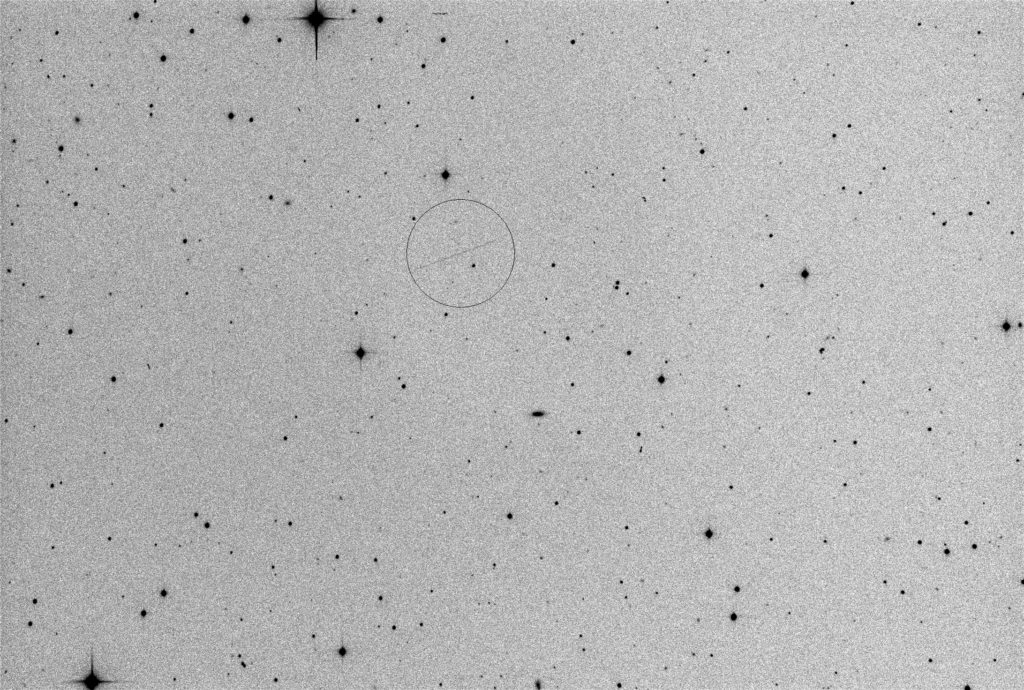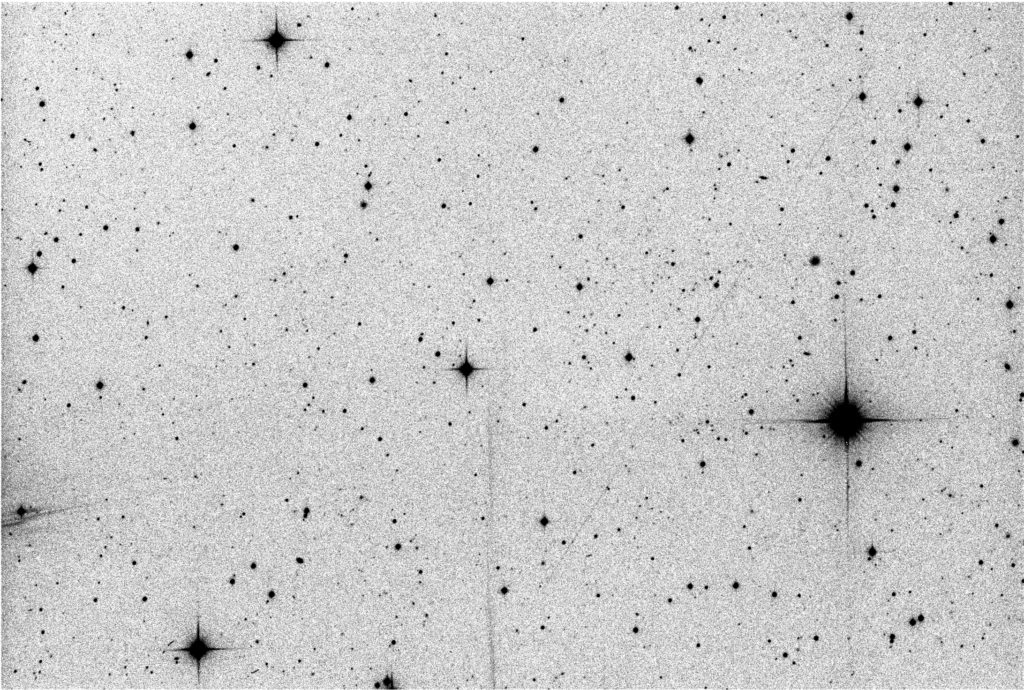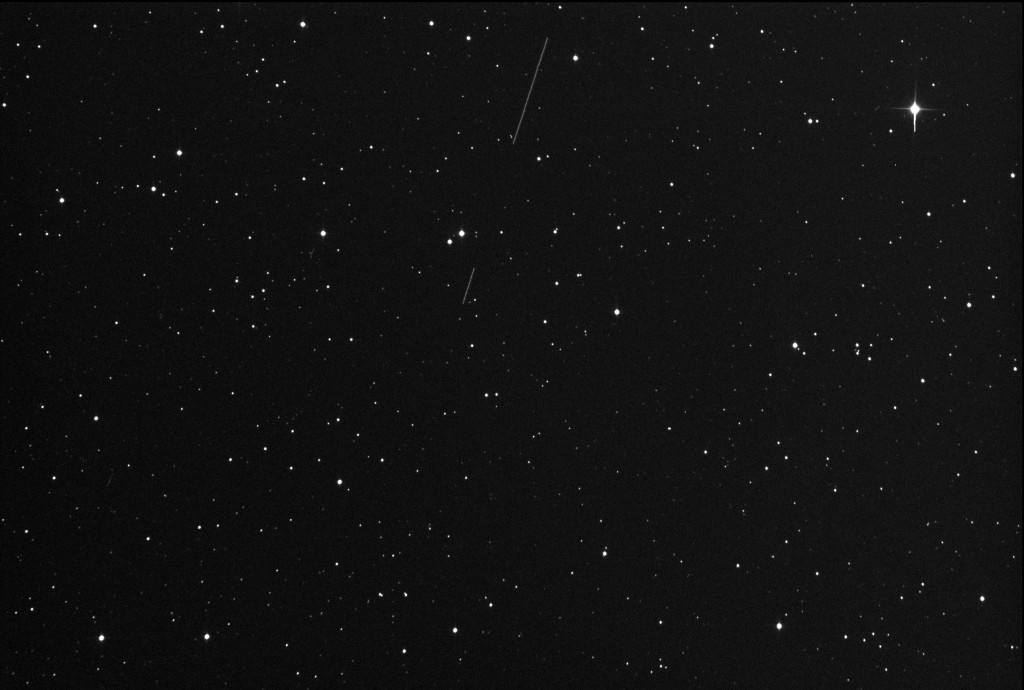As many of you know the OSIRIS-REx spacecraft made an Earth gravitational assist fly-by today. The spacecraft needed the slingshot maneuver to make it to its rendezvous with the asteroid Bennu in August 2018. The spacecraft will orbit the asteroid for up close study, then drop low enough to grab a sample of the surface for return to the Earth in September 2023.
NASA put out a call to amateur astronomers to take images of the spacecraft as it approached the Earth. So, for the past week I have been attempting to do just that. Last night the spacecraft was finally bright enough for me to catch it in a series of exposures. Even so, the speed, brightness and size of the spacecraft makes it very difficult to see.

The above image is the third of eight 300 second exposures that I was able to get before the clouds closed in. The circle shows the location of the automobile sized craft which should give you an idea where it will be in the following animation. The craft’s motion is from upper right to middle left.
I had to stretch the images as well as invert them to make the faint streak a little more visible. This close to the Earth the apparent velocity of OSIRIS-REx is obvious.
[Update: 03 Jan 2018] OSIRIS-Rex is now projected to arrive at Bennu in December of 2018. Approach operations will begin in August.


![[C:3x300s]](https://ptobservatory.com/wp-content/uploads/2016/07/inv_ann_ddp_590-Tomyris-3-1024x690.png)
